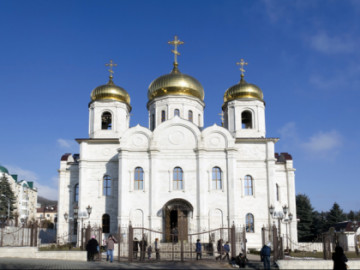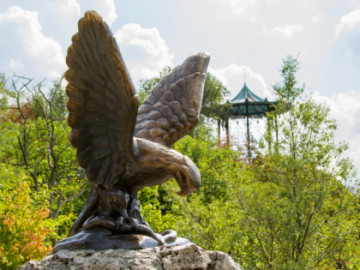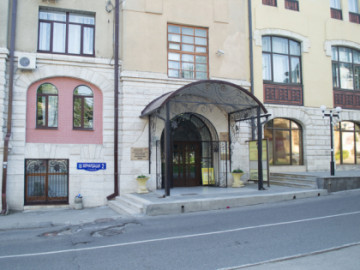Tsvetnik Park: Lermontov Gallery, Yermolov Bath and Diana’s Grotto
The picturesque Tsvetnik Park was built in Pyatigorsk in 1829. The architects ennobled the place of natural accumulation of mineral water in such a way. Here limes, chestnuts, maples and poplars are planted. A one-story Lermontov Gallery near the entrance to the park gives the impression of a fairy-tale palace. It was built, however, much later — in 1901. But the blue pavilion made of metal and glass with gothic steeples and stained glass windows immediately became a symbol of the city.
The building of the Yermolov bath is behind the Lermontov Gallery in the Tsvetnik Park. The first baths were built by order of General Yermolov in 1820 to treat military servicemen. In 1880 a new building appeared from red and yellow brick. The wings form a cross if one looks at them from the mountain. The towers are like domes and are associated with the church. At the beginning of the 20th century the Yermolov baths were the main mud baths in Pyatigorsk. Today there is a clinic here.
In the Soviet era a park on the Hot Mountain was added to the Tsvetnik Park. At its foot in 1829 a small cave with two columns was arranged in honor of the first ascent of Elbrus. Later they installed a sculpture of the Goddess Diana and called it all Diana’s Grotto. There is a semicircular bench inside the cave. A week before his death the Russian poet Mikhail Lermontov and his friends arranged a dancing party on the platform in front of the grotto.









































